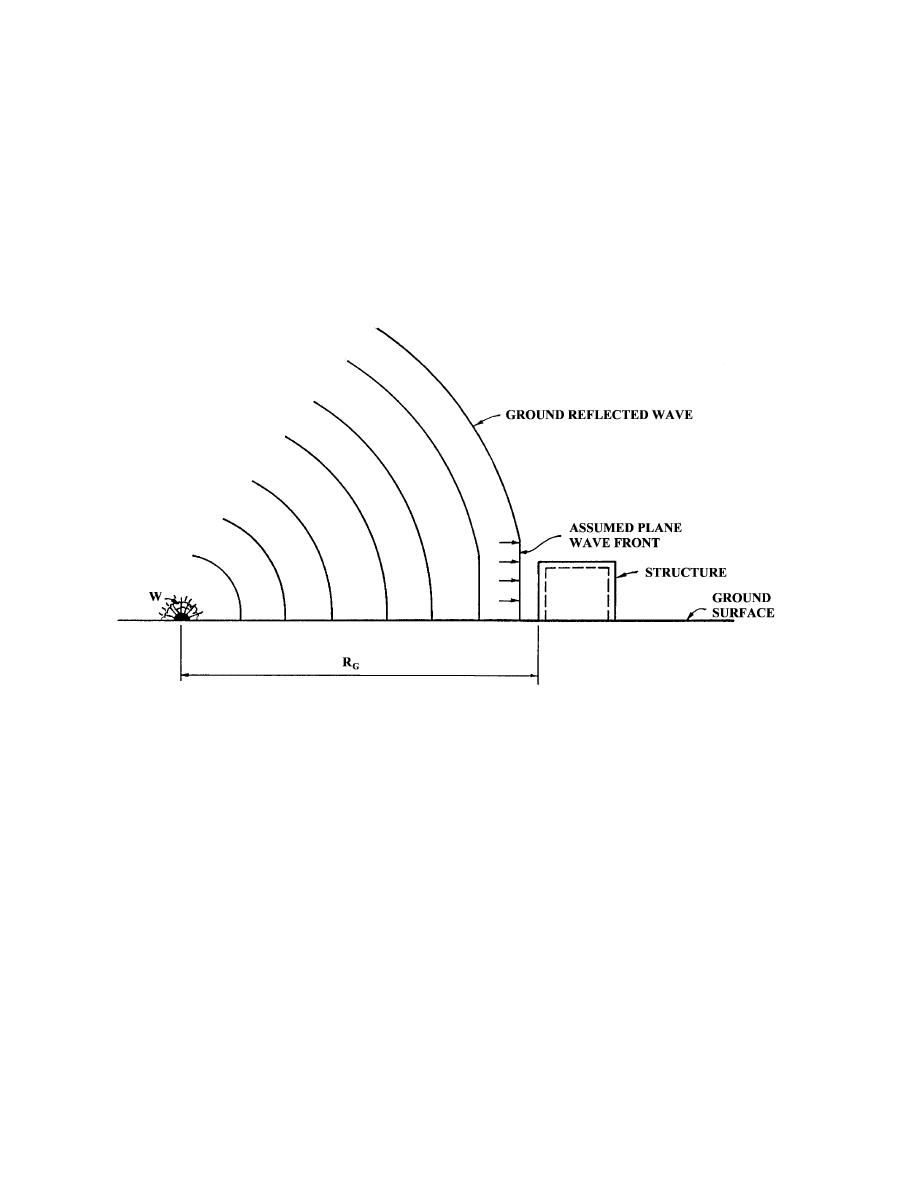

Custom Search
|
|

|
||
 MIL-HDBK-1013/14
APPENDIX D (Continued)
When the incident pressure strikes a wall or building, as shown in Figure D-2, it is
reflected back and amplified, much like an ocean wave crashing against a retaining wall. This
stops the wave and causes water to accumulate, run up the wall, and then reflect back.
Figure D-2
Effects of a Blast Wave on a Building
The relative significance of each of the four components is dependent upon the
geometry and size of the structure, the orientation of the structure relative to the shock front, and
the level of the blast loads.
The interaction of the incident blast wave with an object is a complicated process. To
reduce this complex problem to reasonable terms, it will be assumed here that the structure is
generally rectangular in shape and the incident pressure of interest is on the order of 200 pounds
per square inch (14 kilograms per square centimeter) or less.
99
|
 |
|
 |
||